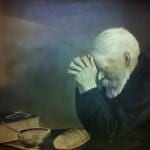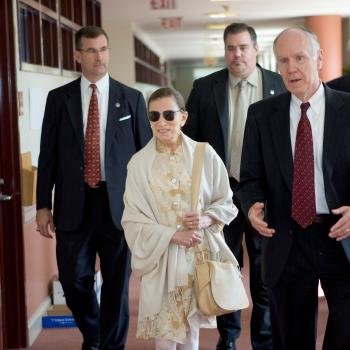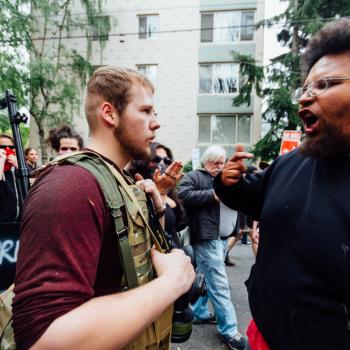You are in a courtroom. The defense attorney is grilling the victim’s friend. Apparently, at least four other people have heard her tell the story over the years, and she can’t seem to get it straight. How many people were with you? Was the door open or closed when you got there? Where were the guards? Whom did you speak to at the scene? It’s not looking good for the prosecution. The witness can’t keep her story straight. First it was just her and a friend, then there was a whole group of women. The door was open. The door was closed. The guards were sleeping. The guards were gone. The details don’t agree.
The defense finishes, and leans back in his chair, obviously satisfied with what just went down. A long moment passes. Then, the prosecutor slowly stands, clears her throat, and re-calls every single name the defense just mentioned. One by one, she asks them the same basic questions: Did Mary say she went to the tomb? Did she say the body was missing? Did she then immediately go and tell her friends? Do you know of anyone who was there who disputes that the body was gone? If someone you loved had just been murdered by a police state, and you suddenly found their tomb empty, wouldn’t you be a little shaky on the details? Wouldn’t you focus mostly on what’s important?
Objection!, cries the defense. Foundation! Relevance!
Withdrawn, answers the prosecutor. I’ll stick to the core of the story if he will…
. . .
It is undeniable that the Gospel accounts of the resurrection of Jesus do not agree. Certainly, a little conjecture can rearrange the story just enough to make it plausible, but that kind of stretching is dangerous when it comes to to scripture, as evidenced by the many, many un-Christlike messages out in the world supported by nothing more than a few cherrypicked Bible words and a heaping serving of confirmation bias.
The truth is that the entire Bible—not just these passages—is a competing, conflicting collection of earnest voices, none of whom, as Paul reminds the church at Corinth, have complete knowledge of anything (1 Cor. 13:8-12).
As Christians, when we read the scriptures, we read them for commonalities. For running threads that permeate and saturate the stories of God’s people. We privilege the words and works of Christ above others. As Paul concludes, “faith, hope, and love abide” (v. 13, NRSV), but there are also some specific lessons to be gleaned here:
1) Christ is Risen
Not one account denies what all accounts affirm. The tomb was empty. Christ is risen.
2) Christ is Rising
Jesus did not go directly to his Father, and did not declare that any of his work was done. Instead, he came back to walk with his disciples, remind them of his commandments, and mediate for them the arrival of a new advocate, the Spirit of truth, to guide them moving forward (Jn. 14:15-17).
3) Believe Women
Too often, we remember the doubt Thomas had when he was filled in by the other male disciples about Christ’s resurrection (Jn. 20:24), but we forget the doubt of the rest of the apostles (Lk. 11:11; Mk. 16:11). Regardless of whom the women told, or what they believed, all the accounts agree that it was the women who discovered the empty tomb, and the women who received the first divine revelation (either from Christ or the angels). While the men stood around examining strips of linen and asking to touch Christ’s wounds, the women were already present for and in the greatest miracle of all time. This can’t have been by accident.
. . .
In the end, the details don’t much matter. These are stories, told by men to try to describe the indescribable. What is important is that the events described in all four Gospels lead to the Paschal understanding that the prophecies are now fulfilled, and we are all called to move forward in the faith, hope and love of the true Christian movement.













